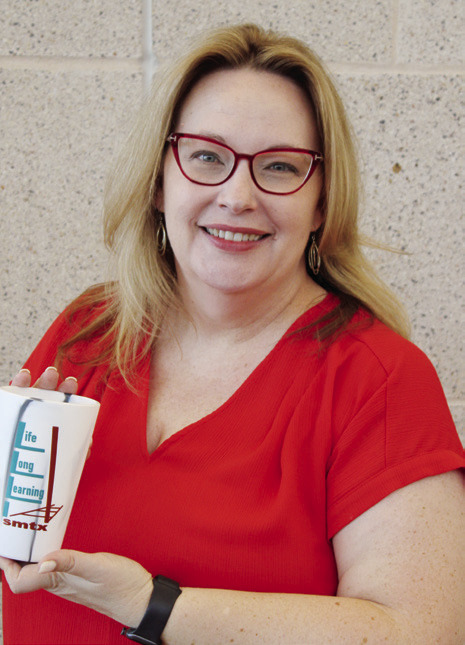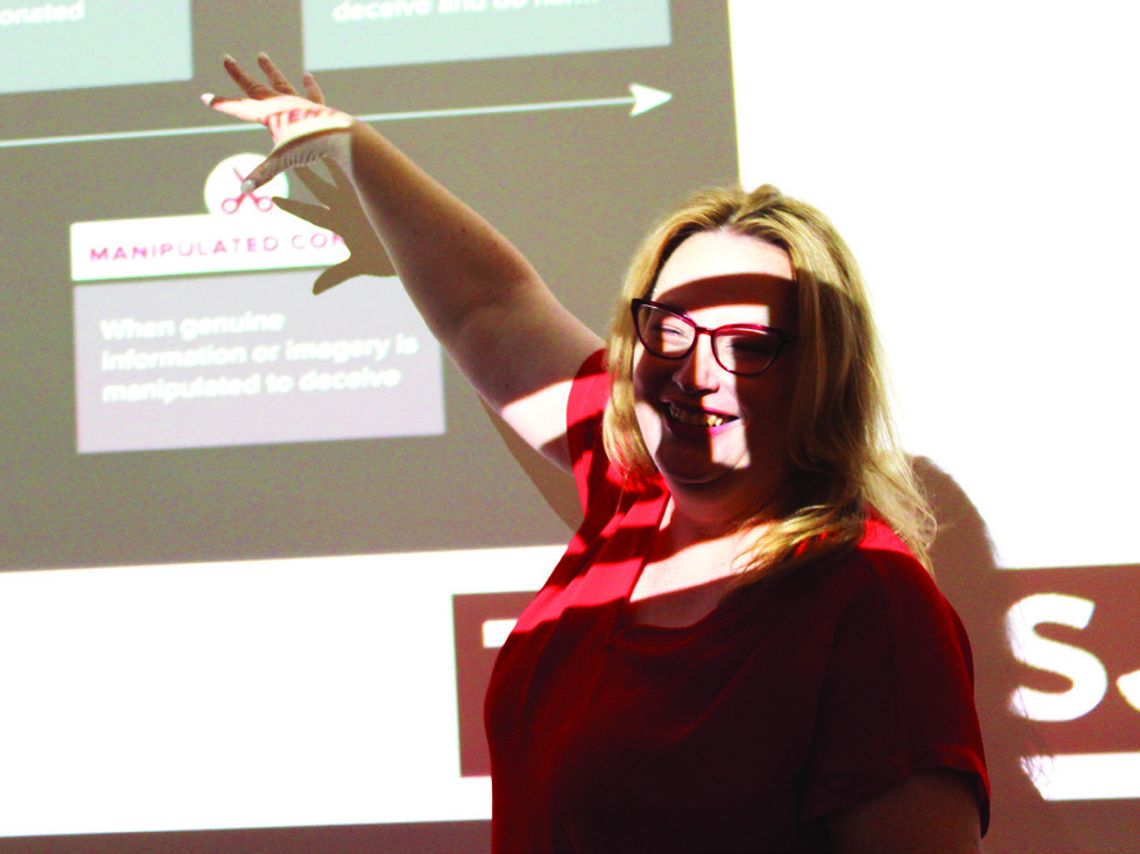LIFELONG LEARNING
With so much misinformation and disinformation circulating through social media and on the internet at large, it is helpful to understand how to parse through the muck in search of the facts. As part of Lifelong Learning SMTXs current lecture series, which occurs at 10 to 11:30 a.m. on Mondays (the final lecture will be this upcoming Monday) at the San Marcos Public Library, Amber Hinsley, TXST Journalism and Mass Communication associate professor, taught how to determine the credibility of online information.
“It helps me to know, I need to take everything I read with a grain of salt,” Hinsley said. “There’s elements of truth in almost everything, especially in the news… All of it starts with some kernel of truth. It’s [all about] thinking... ‘What’s the other side of this? Or where does this information come from?’” Hinsley said to start by asking these questions, “What was the author’s purpose in doing this? Is it objective information? Is it complete information?

Amber Hinsley
What’s potentially not in here; you’re looking at things like, how current is this? What sources are used? What’s the relevance to whatever the topic is of this overall piece of information?”
Hinsley said to start by reading laterally, which is essentially fact-checking.
“I’m going to go, and I’m going to open up another window on my computer or another tab on my computer. And I’m going to see if I can verify some of this information,” Hinsley said. “This takes a lot more cognitive effort than we want to put in a lot of times. … How often are we guilty of just reading a headline and saying, ‘yep,’ and either sharing it or going on?”
Hinsley shared the example of fake news in the form of a photoshopped photo and a trick for how to decipher its authenticity.
“You can do what’s called a reverse image search on the Google Home screen. On the Google Home Bar, there is a little picture of a photograph, and you can click on that and then take a picture like this and load it into it. It will tell you whether or not this is a doctored photo,” Hinsley said, adding that this is only helpful when it has been reproduced in other places. “I could just generate a graph and show you completely fake numbers, and Google, with AI reverse image search, is not going to catch it. It’s when it gets shared over and over again that Google then starts saying, ‘Hey, there’s questions about this.’” Hinsley said there is a lot of gray area when it comes to fake news, meaning it isn’t as clear cut as being divided into real and fake, which can make it difficult to identify. People often cherry pick facts to mold the narrative they are trying to achieve. There can be propaganda from the government that attempts to change minds or publicity, which does the same and is in the same realm but more “innocuous.”
“Publicity is usually a little more based in this kind of gray area, where we’re taking things and we’re adding some false content or false context to something,” Hinsley said. “Misinformation is based on some sort of truth. Misinformation is — I’m taking facts and I’m presenting them in a certain way to oftentimes reinforce whatever my argument is, so I’m not necessarily telling you what the other side of this might be. … Disinformation is manipulated content, fabricated content… Disinformation, again, has … more intentionality, and that’s kind of where we think about propaganda… because propaganda, as we think about that, that’s more of… putting thought into misleading people.”
Hinley said there are also several cognitive biases that make people more suscepti ble to false information. Confirmation bias is when a person is told something that is already in line with what they believe, so they are more likely to understand it as fact. She said people regularly push back against information that is new or unfamiliar, because they are overwhelmed with the sheer amount of content that they see in a single day. There is also a truth-trust inclination that means if the information is from a trusted source, a friend for example, it is more likely to be believed. Another example is the bandwagon effect — if many of the people in one’s community believe something, that person is more likely to believe it also. Another example is the use of nostalgia. That nostalgia makes it so that the person only remembers the good things that happened from that time while ignoring the bad.
“We need to focus on information literacy because, remember, information literacy is that kind of overall big overarching information,” Hinsley said. “A lot of what we encounter on social media, on the internet, kind of any digital format, it’s not necessarily news; it’s information. So approaching it with this idea of being more literate, [and] having a greater awareness of where this is coming from. What does the author of this want me to do with it? What reaction are they trying to get? … What other facts may be out there? What other voices am I not hearing in this piece of information?... Remember, those biases are informing our beliefs, and then those are informing our behavior.”
Hinsley said the key to fighting bias is accepting ambiguity and a willingness to have the hard conversations.
“Let them ask questions. It’s a big cognitive load for you, though, because you have to be prepared to talk about it. That’s hard for us because I don’t want to be challenged. Who wants that? But if you really want to engage with someone, that’s the conversations you have to be willing to have… which is communicating core facts,” Hinsely said. “Stick to what your facts are, and look at what their facts are. How can you talk to their facts, and help them see, potentially, the problems within their facts?”
However, if things escalate into an argument Hinsley recommended walking away at that point because the other person is not showing a willingness to have a productive conversation.
The final lecture in this series will occur Sept. 30 and will be given by Dr. Robert Mace, the Meadows Center for Water and the Environment executive director. He will be discussing Water in Central Texas: from rain to the aquifers.







